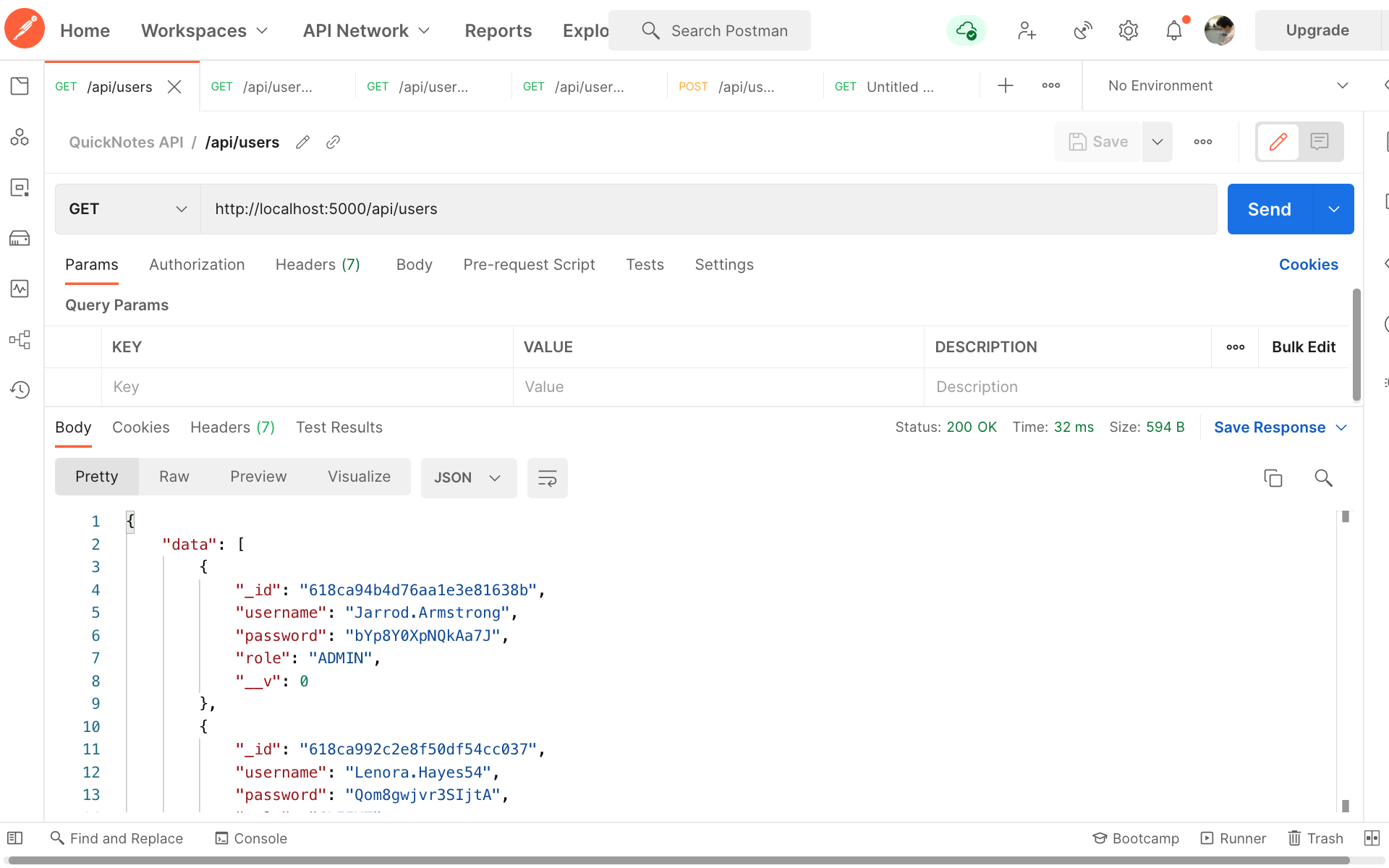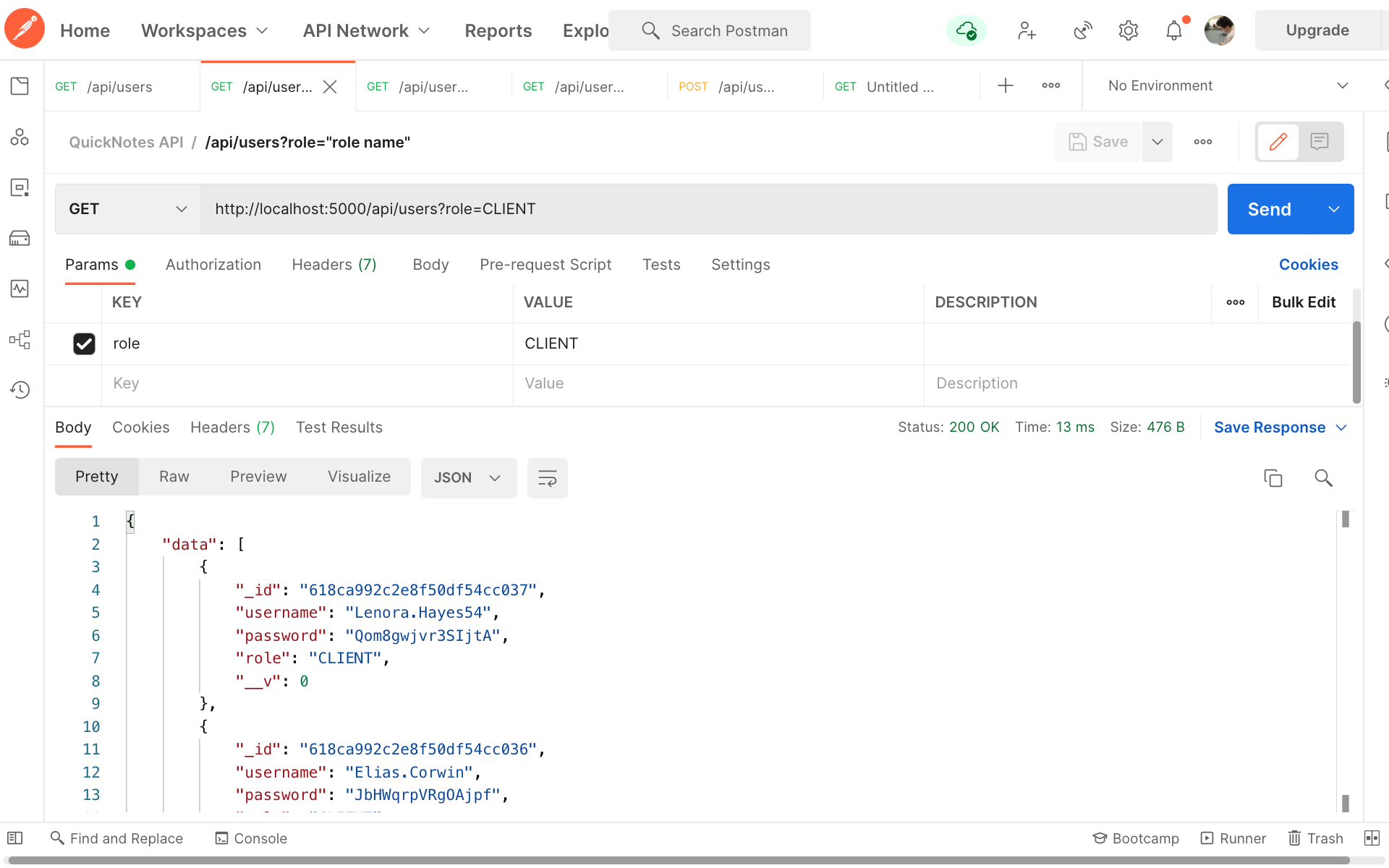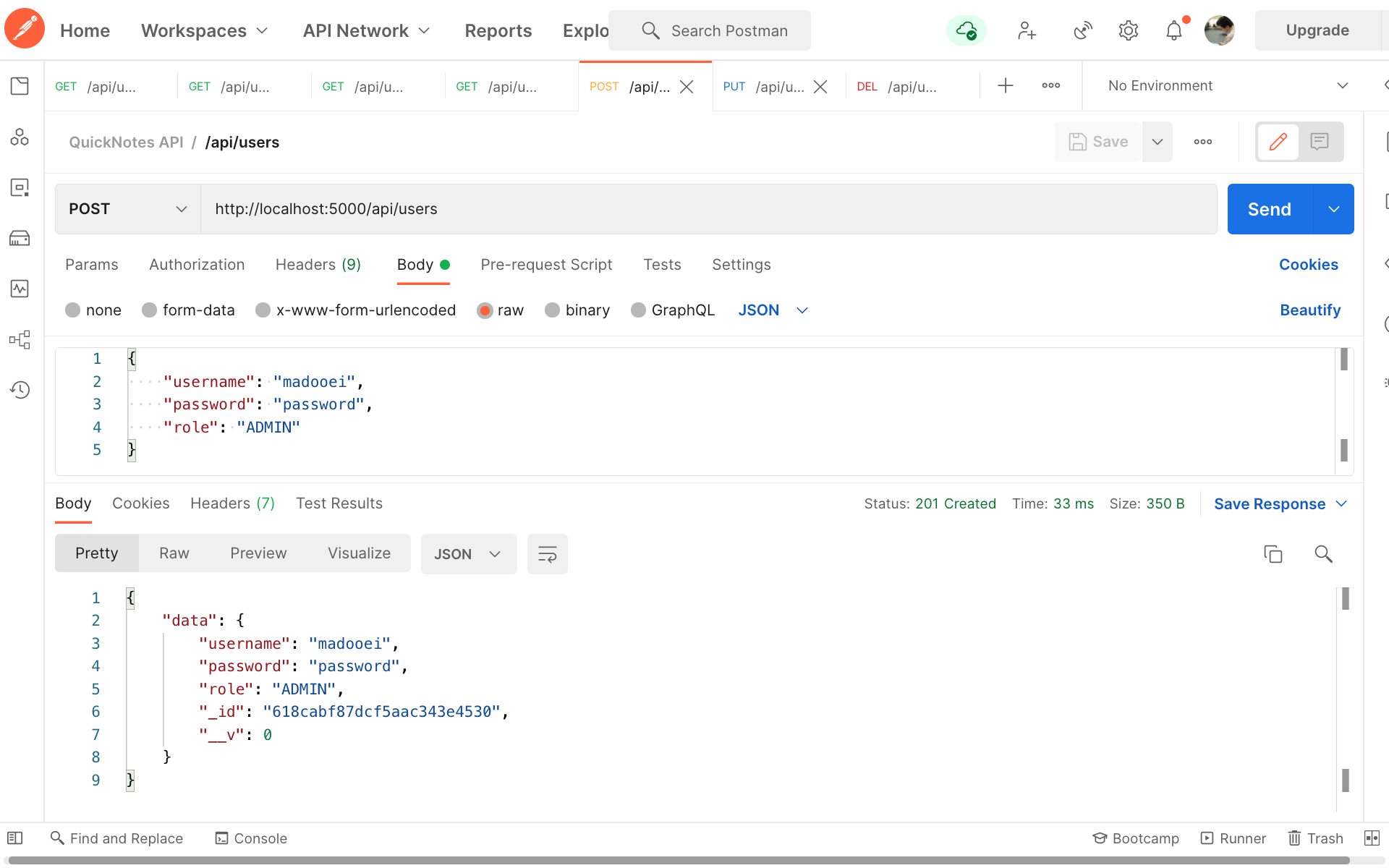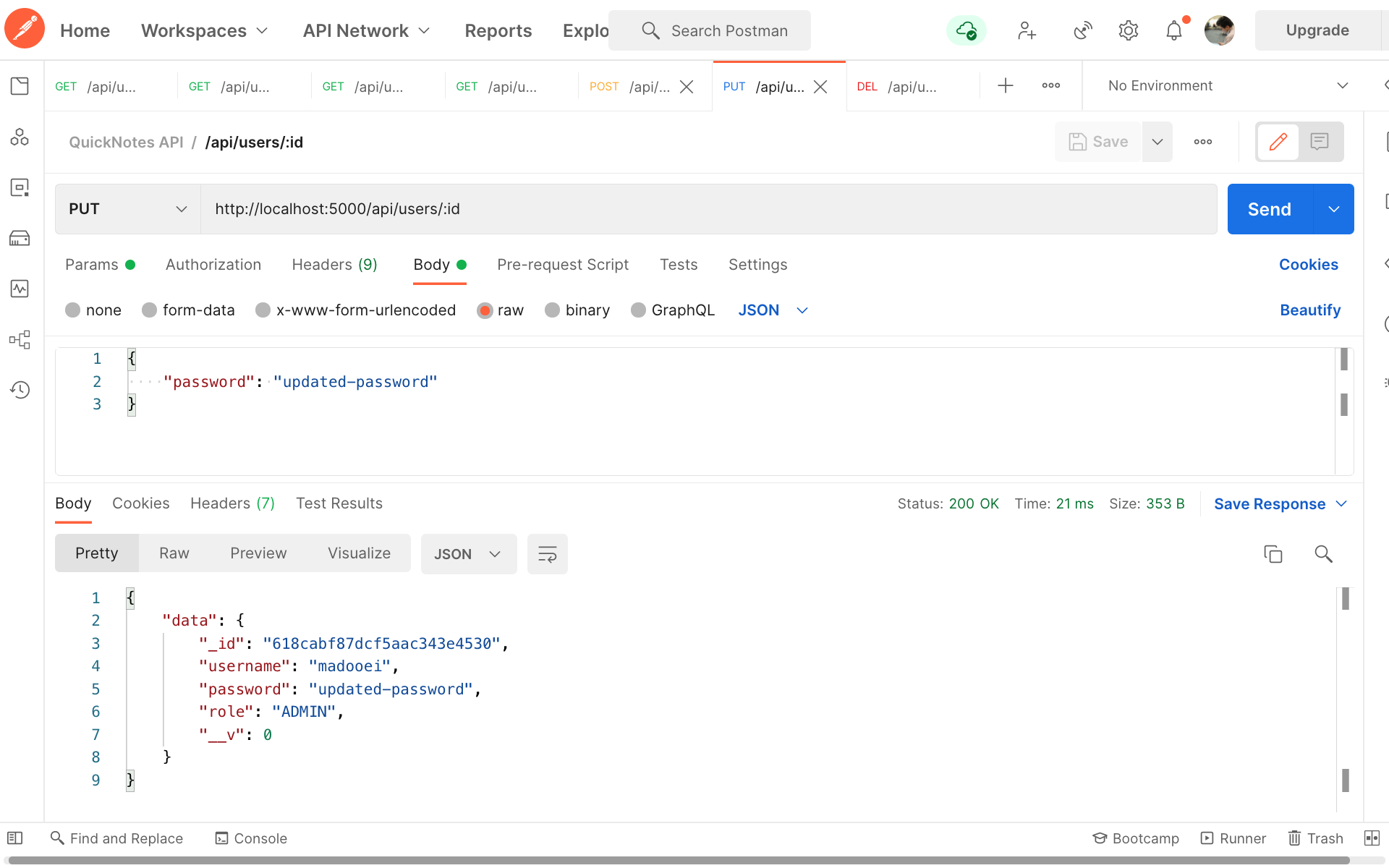Step 5
Let's run the server and test it in Postman to ensure routing works as expected.
npm run dev
GET /api/users

GET /api/users?role="role name"

GET /api/users?username="username"

GET /api/users/:id

POST /api/users

PUT /api/users/:id

DELETE /api/users/:id
